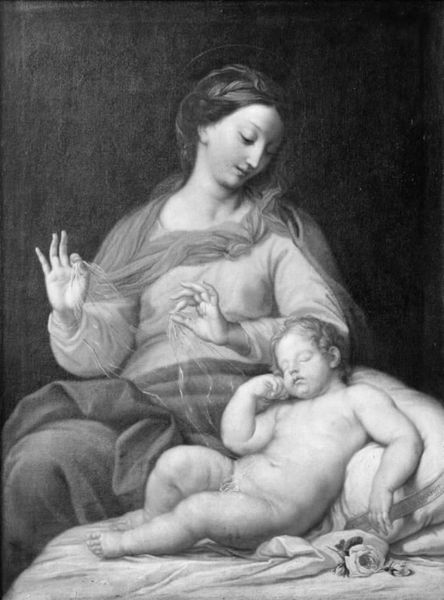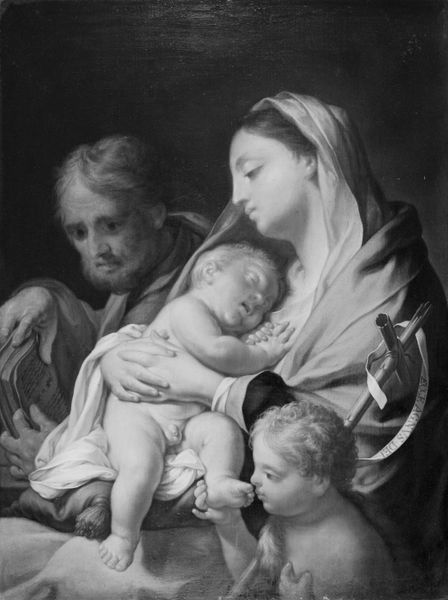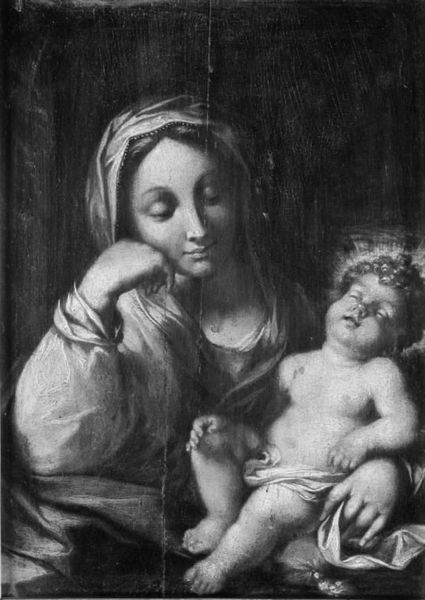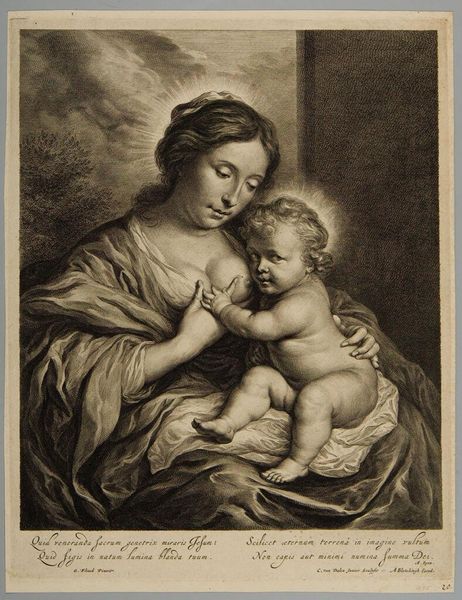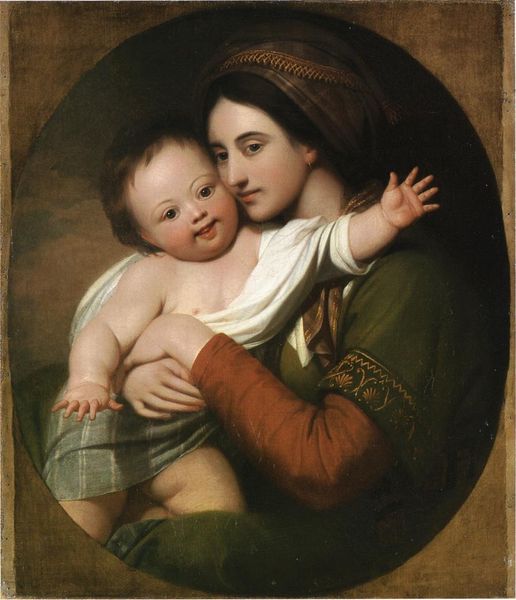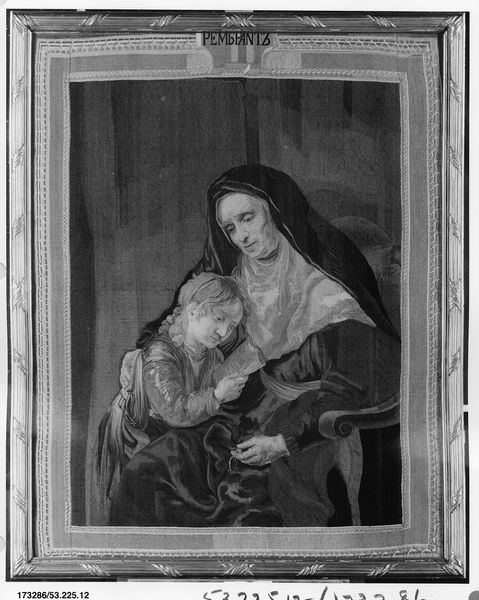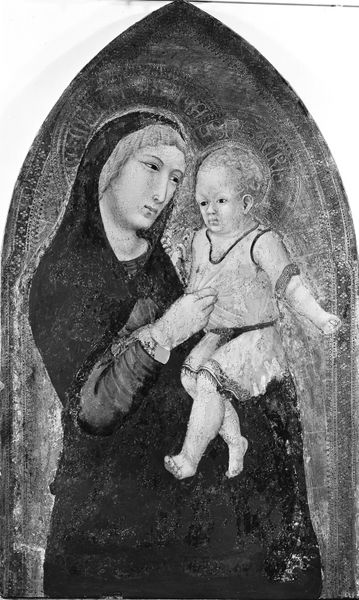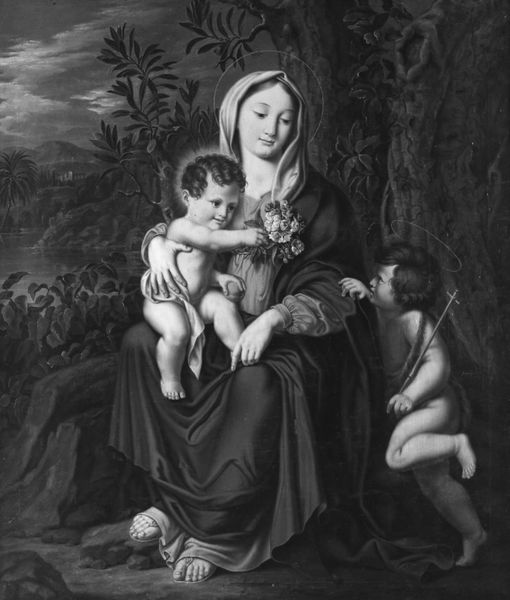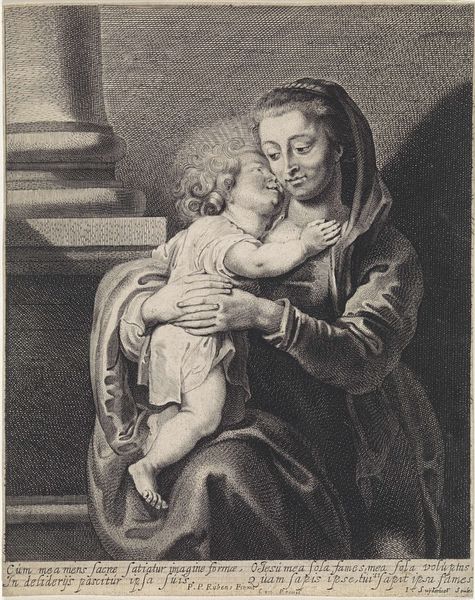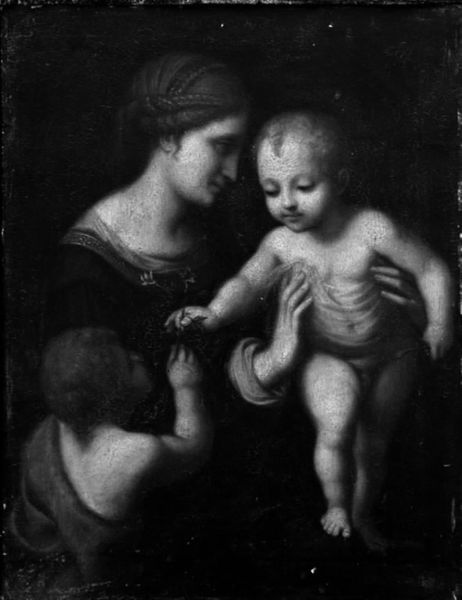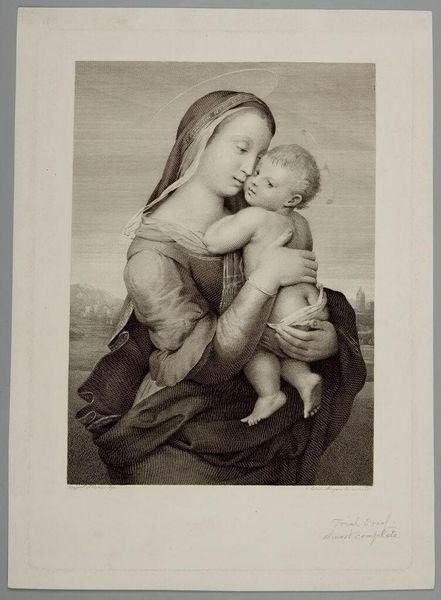
painting, oil-paint
#
portrait
#
baroque
#
portrait
#
painting
#
oil-paint
#
landscape
#
figuration
#
madonna
#
child
#
history-painting
#
italian-renaissance
#
realism
Dimensions: 39 3/4 x 30 3/8 in. (101 x 77.2 cm)
Copyright: Public Domain
Curator: Here we have Peter Paul Rubens’ “Virgin and Child,” believed to have been created sometime between 1597 and 1640. It's an oil painting. What are your initial impressions? Editor: There's an immediate intimacy, almost like we're intruding on a private moment. It’s tender. But look closely – there’s also something quite unsettling about how monumental this mother and child are in contrast to their surroundings. What do we know about the specific materials Rubens used? Curator: Well, beyond being oil on canvas, studying surviving invoices and letters from Rubens gives us clues. He was particular, specifying the weave of the linen canvas and sourcing pigments from specific regions known for quality. Think about that: the globalized trade of the 17th century informing this sacred image. The lapis lazuli, ground into ultramarine for her robe, possibly sourced from as far away as Afghanistan! Editor: Precisely! And it’s crucial to consider the context of women at the time this was created and understand this work within the larger iconography surrounding the Madonna. There's this prevailing tension—the expectation of women in society versus the powerful, independent figure the Madonna often represents. Do you see that conflict reflected here, particularly in her expression? Curator: I see a skillful layering of paint that mimics flesh. The way Rubens built up those delicate pinks in the child's cheek, it’s incredibly tactile. He understood the value of his materials and used them masterfully. Look at the heavy folds of her garment—they almost have a sculptural presence, a clear product of intensive studio labor to render on canvas. Editor: And it forces us to consider how the patronage system affected his depictions. Painting the Virgin and Child resonated with a powerful institution. Rubens crafted his materials, sure, but his art was fundamentally molded by economic realities and political imperatives. What choices was Rubens making—and what choices were effectively being made for him? Curator: It’s undeniable how those elements played a huge part in production of this era’s works of art. Ultimately, “Virgin and Child” gives us the opportunity to examine how artistic choices intersect with the availability of labor, global exchange, and material worth. Editor: It certainly compels us to ask difficult questions, doesn’t it? Questions not just about artistry, but about society and its impact on belief and representation. It speaks volumes.
Comments
No comments
Be the first to comment and join the conversation on the ultimate creative platform.
